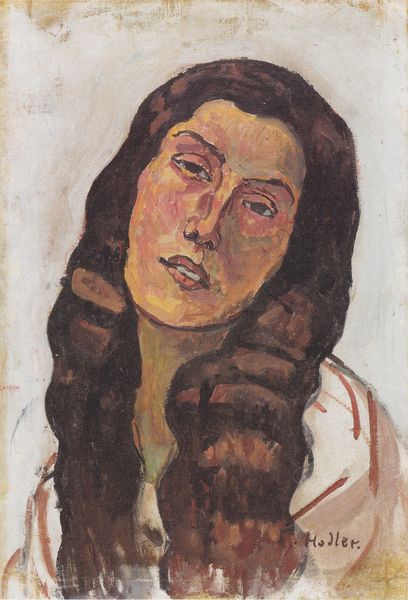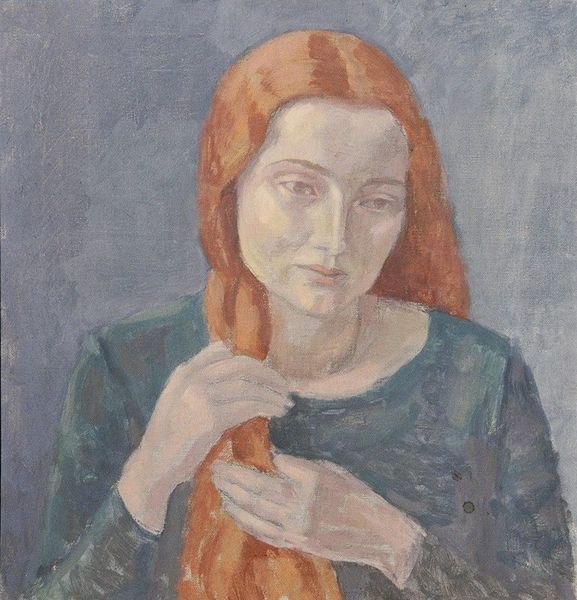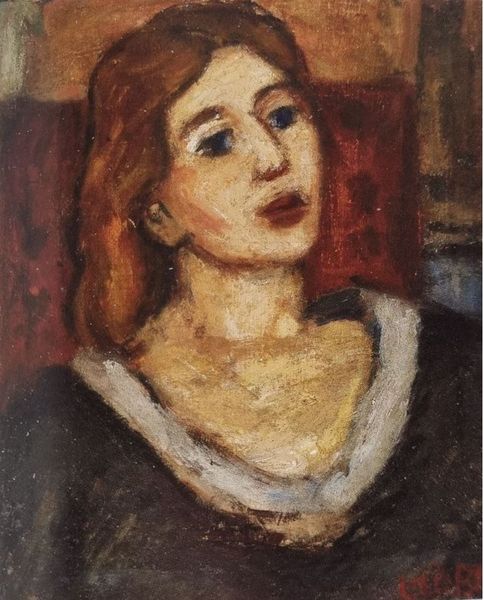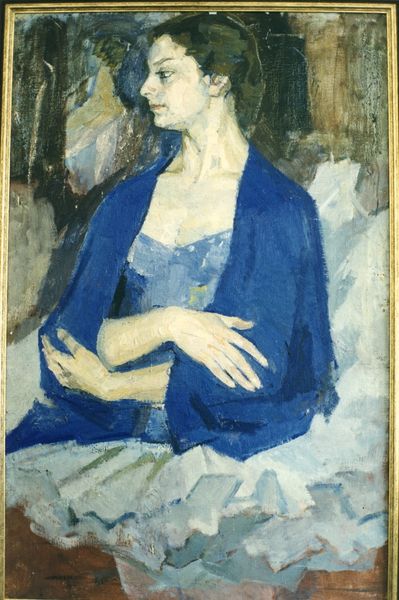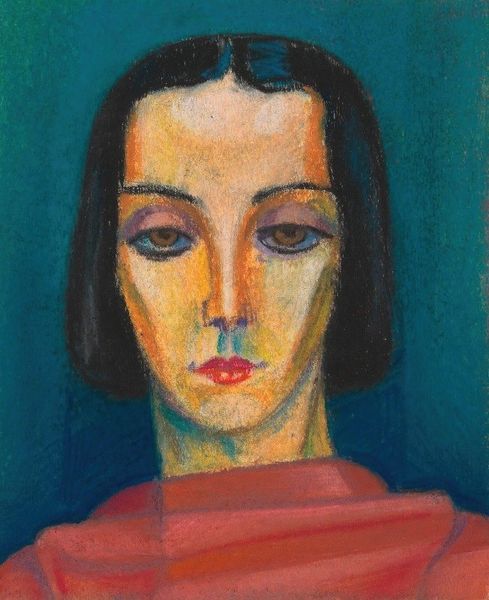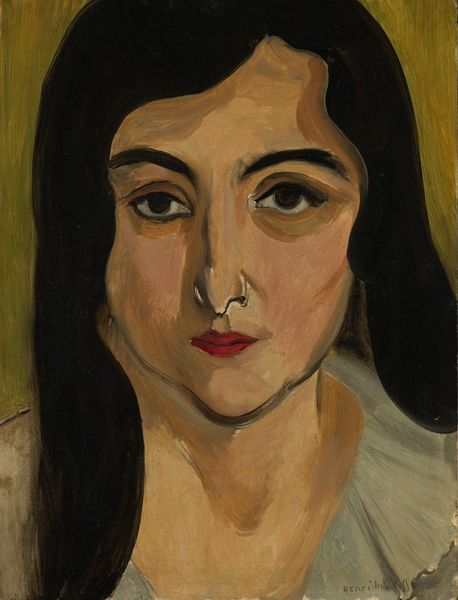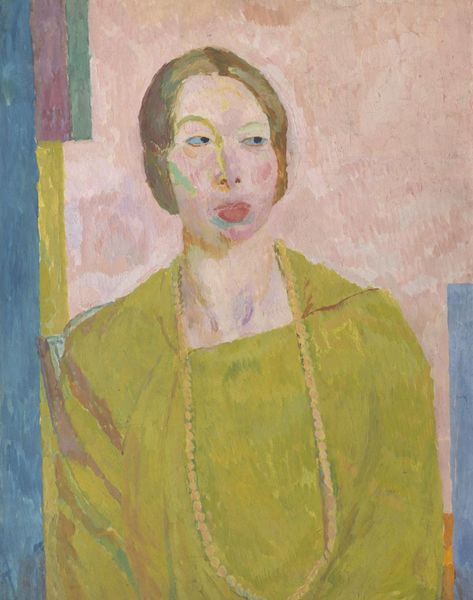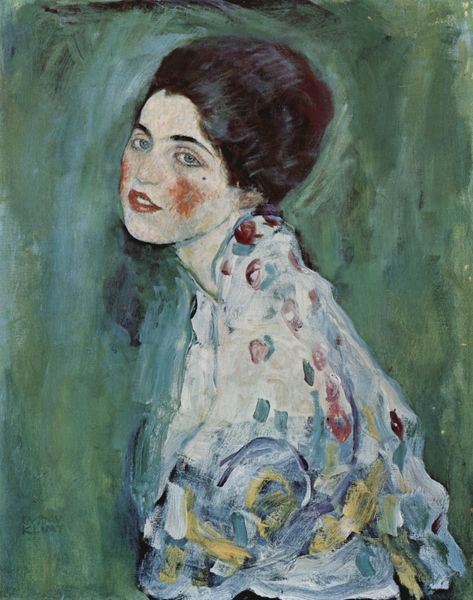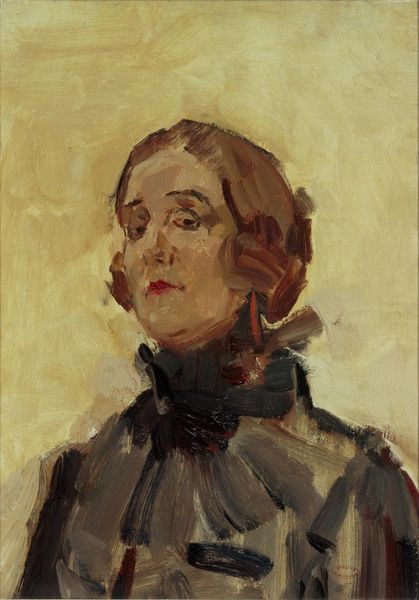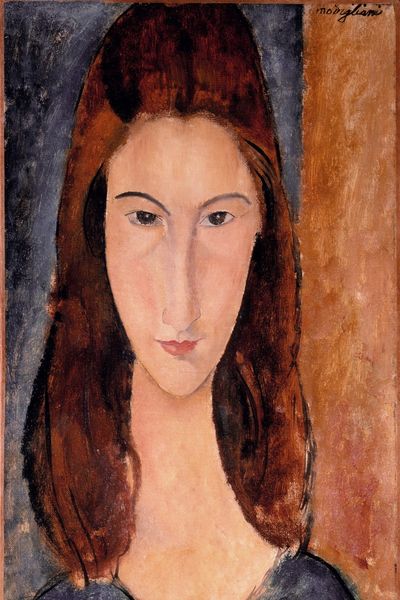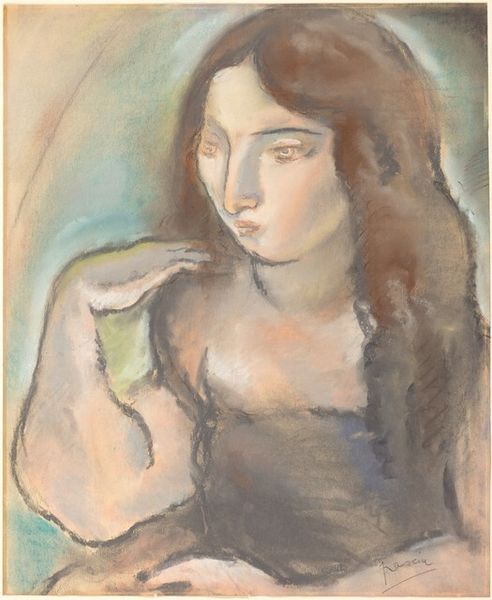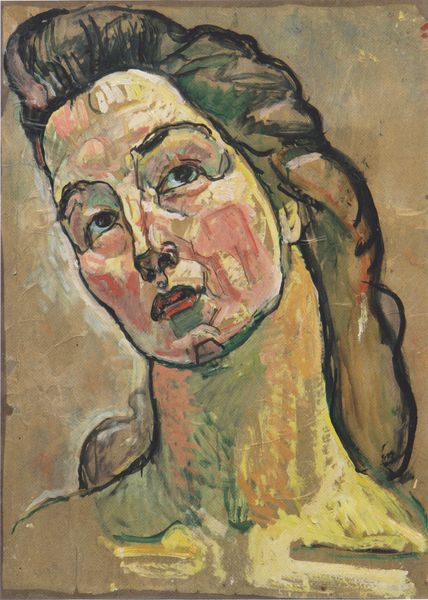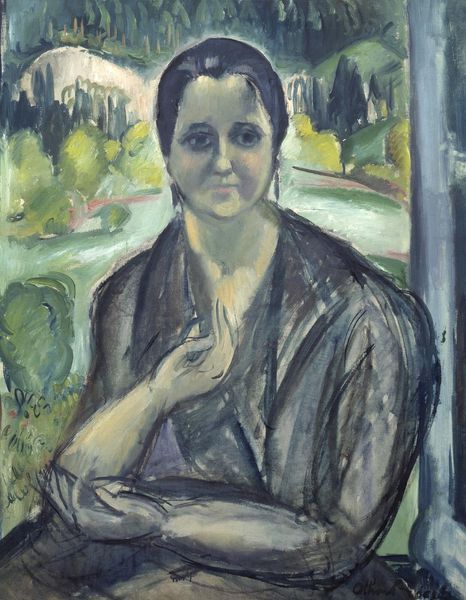
oil-paint
#
portrait
#
figurative
#
oil-paint
#
oil painting
#
expressionism
#
portrait art
#
modernism
Copyright: Public Domain: Artvee
Curator: This is "Naise portree," or "Portrait of a Woman," painted between 1923 and 1924 by the Estonian artist Konrad Mägi. He employed oil paint to realize this captivating, figurative work. Editor: It’s immediately striking how her gaze avoids meeting ours, isn’t it? There's a certain vulnerability, a contemplative mood in those lowered eyes and the subtle blush on her cheeks. Curator: Mägi was indeed deeply interested in the expressive possibilities of the portrait. During the early 20th century, as new modes of visual representation were emerging, portraiture became a fascinating arena for exploring modernity’s focus on inner psychological states. The museum's display of this painting connects directly with the legacy and evolution of that public role for art. Editor: I appreciate that historical perspective, but I also see echoes of contemporary issues of female representation. She appears almost melancholic, draped in a manner that is quite concealing. Is this protective or oppressive, a shielding from a world, or a subjugation by the visual restraints of her time? It prompts questions about how women are portrayed and the societal expectations imposed on them. Curator: That’s a valuable point. Mägi’s style, classified as expressionism and modernism, veered from academic portraiture traditions. What was considered 'proper' during Mägi’s life involved norms, behaviors, values, and symbolic meanings of that era. To truly dissect it we should ask what expectations Mägi faced when depicting his sitter and for what audience. Editor: And perhaps subverting those very expectations… The use of colour, too, enhances that. The juxtaposition of the muted red against the deep blue creates a visually arresting and emotionally charged contrast, complicating the narrative beyond a simple rendering of a woman's likeness. Her slightly melancholic features are made even more vivid because of this. Curator: He was known for using colours in an non-traditional way, which contributed greatly to the emotive power in his works, adding a sense of almost otherworldliness to his paintings. "Naise portree" embodies how Estonian art adapted wider European styles, fitting within expressionism while retaining distinct local flavor. Editor: So, looking at "Portrait of a Woman", it makes us ask who exactly this person was, but it also calls on us to wonder at the status and representations of women during the period between world wars, but equally how we understand gender dynamics even today. Curator: I think, ultimately, this painting offers more than just an image. It's a window into the socio-cultural fabric of Estonia in the 1920s and showcases how artistic style itself carries nuanced meaning.
Comments
No comments
Be the first to comment and join the conversation on the ultimate creative platform.
